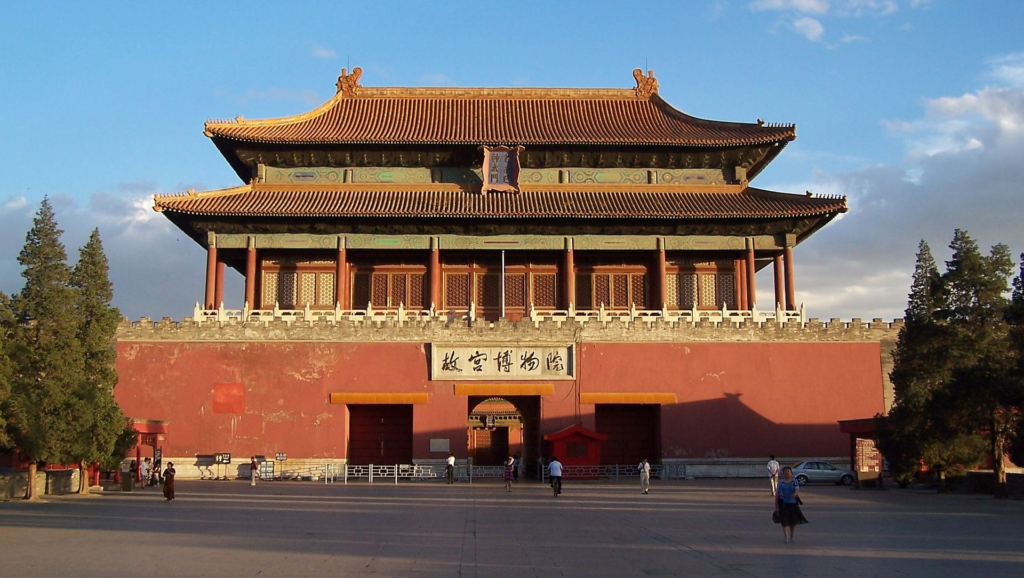Introduction
A major cultural and art boom had taken place during the high Classical period in Ancient Greece, which ran from the 5th to 4th century BCE. It was a period in which Greek civilization reached its height and left an enormous influence on the rest of the world. In this article, we focus on the art and culture of that extraordinary period, to examine its various aspects and achievements. The High Classical Period in Greece is generally regarded as the high point in the development of the Classical tradition. It was the most refined expression of the Greek view of art. This period saw significant changes in Greek architecture, with adherence to proportion, optical refinements, and early exploration of monumentality.
Historical Background
The High Classical Period emerged following the Persian Wars, a series of conflicts between Greece and the Persian Empire. The victories of the Greeks in these wars fostered a sense of pride and unity, which laid the foundation for the cultural renaissance that followed. The two most notable city-states during this period were Athens and Sparta.
Architecture in the High Classical Period:
Architectural Marvels of the High Classical Period:
The architectural achievements of the High Classical Period were truly remarkable. The most iconic example is the Parthenon, a temple dedicated to the goddess Athena, situated on the Athenian Acropolis. Designed by the renowned architects Ictinus and Callicrates, the Parthenon is a perfect embodiment of classical Greek architecture, featuring Doric columns, intricate sculptures, and a harmonious aesthetic.
Sculpture and Statuary:
Athena (The Hope Athena) 2nd century AD Roman copy… – Greek-Roman … (tumblr.com)
The beauty of a high classical sculpture:
Classical Greek sculpture refers to the sculpture from Ancient Greece and Ancient Rome and their influenced cultures from about 500 BC to around 200 AD. It is distinguished by its naturalistic and idealized representation of the human figure, using systems of proportions, balance, and expression. It is divided into three periods: Early, High, and Late Classical, which show a steady and rapid progression in style.
During the high classical period, sculptures rose to their highest point. The ideals of this age are reflected in works by prominent sculptors, such as Phidias and Polykleitos. Marble statues became prevalent, depicting gods, goddesses, athletes, and mythological figures. The statues were characterized by idealized forms, anatomical precision, and a sense of naturalism. The sculpture and statuary of this period provide standards not only in art but also in how we view the living human body. The poses became more naturalistic, and the technical skill of Greek sculptors in depicting the human form in a variety of poses greatly increased.
Classical Greek sculpture used materials like stone, bronze, wood, bone, and ivory, and often painted the statues. It celebrated mankind as an independent entity and expressed movement, freedom, and realism.
Pottery and Vase Painting:
Vibrant Pottery and Vase Painting of the High Classical Period:
Athena (The Hope Athena) 2nd century AD Roman copy… – Greek-Roman … (tumblr.com)
During that time the art of pottery and vase painting flourished. In addition, the Athenian ceramics became famous around the world. The techniques for red and black figures have been developed, allowing for intricate and detailed representations. These vessels were used for a variety of purposes, from storage of goods to ceremonial use, and often depicted scenes of mythology, daily life, and historical events.
Greek pottery is important both for its intrinsic beauty and for the light it sheds on the development of Greek pictorial art 1. The painted decoration of pottery has become the main source of information about the process whereby Greek artists gradually solved the many problems of representing three-dimensional objects and figures on a flat or curved surface1.
The earliest stylistic period of Greek pottery is the Geometric period, lasting from about 1000 to 700 BCE. This period is further broken down into a Proto-Geometric transition from Mycenaean forms. In this period, the surface of the pot was completely covered with a network of fine patterns in which circles and arcs predominate 1.
Literature and Theater
The Literary Brilliance of the High Classical Period:
Extraordinary literary achievements have been recorded during the High Classical Period. Greece’s theatre has been turned upside down by the work of famous writers such as Aeschylus, Sophocles and Euripides. Tragedies and comedies were performed in open-air amphitheatres, exploring profound themes of fate, morality, and human nature. Even now, audiences are still fascinated by these plays.
Greek theatre began in the 6th century BCE in Athens with the performance of tragedy plays at religious festivals. These, in turn, inspired the genre of Greek comedy plays. The works of playwrights like Sophocles and Aristophanes formed the foundation upon which all modern theatre is based. Greek theatre was performed in open-air theatres, usually built into the side of a hill. The theatres were large, with seating for thousands of people. The stage was a circular area called the orchestra, and behind it was a building called the skene, which served as a backdrop and a dressing room for the actors. The actors wore masks and elaborate costumes, and the performances were accompanied by music.
In ancient Greece, literature was an important aspect of culture. The Greeks made significant contributions to various literary genres, including epic poetry, lyric poetry, and theatre. Some of the most famous works of Greek literature include the epic poems the Iliad and the Odyssey by Homer, which tell the stories of the Trojan War and its aftermath. Greek theatre also produced many famous works, including the tragedies of Aeschylus, Sophocles, and Euripides, and the comedies of Aristophanes. These works continue to be read and performed today and have had a lasting impact on Western literature.
The Iliad and the Odyssey are two epic poems attributed to the ancient Greek poet Homer. These works are considered to be among the greatest achievements in ancient Greek literature and have had a lasting impact on Western literature. The Iliad tells the story of the Trojan War, while the Odyssey follows the journey of Odysseus as he travels home from the war. These works provided the basis of Greek education and culture in the Classical age and have remained among the most significant poems of the European tradition.
The significance of these works lies not only in their literary merit but also in their impact on Greek identity, patriotism, and nationalism, as well as works of art and theatre. They are also important sources for historians who seek to understand life in ancient Greece. The stories told in these poems have become archetypal road maps in world mythology and provide an important insight into early human society.
Philosophy and Intellectual Achievements:

Philosophical Enlightenment in the High Classical Period
Philosophers such as Socrates, Plato and Aristotle dominated this intellectual landscape in the High Classical Period. The foundation for the West’s philosophy has been provided by their profound insight. Socrates’ Socratic method, Plato’s Theory of Forms, and Aristotle’s scientific inquiry revolutionized the way humans perceive the world and contemplate abstract concepts.
The Classical Period of ancient Greece was a time of great intellectual achievement. The Greeks made important contributions to philosophy, mathematics, astronomy, and medicine. One of the key points of Ancient Greek philosophy was the role of reason and inquiry. It emphasized logic and championed the idea of impartial, rational observation of the natural world.
The three most famous Classical Greek philosophers are Socrates, Plato, and Aristotle. Socrates is best known for his probing question-and-answer style of examination on a number of topics, usually attempting to arrive at a defensible and attractive definition of a virtue. Plato was a student of Socrates and is the author of numerous dialogues and letters. In his defining work, The Republic, Plato reaches the conclusion that a utopian city is likely impossible because philosophers would refuse to rule and the people would refuse to compel them to do so. Aristotle was a student of Plato, the tutor of Alexander the Great, and founder of the Lyceum and Peripatetic School of philosophy in Athens. He wrote on a number of subjects, including logic, physics, metaphysics, ethics, rhetoric, politics, and botany.
There are many statues of the famous Greek philosophers Plato, Socrates, and Aristotle. One of the most famous depictions of these philosophers is in the fresco “The School of Athens” by the Italian Renaissance artist Raphael. This painting, located in the Apostolic Palace in the Vatican, depicts Plato and Aristotle in the centre, with Plato pointing upwards to the heavens and Aristotle gesturing towards the earth. Socrates is also depicted in the painting, engaged in conversation with other philosophers.
There are also many individual statues of these philosophers. For example, there is a statue of Plato in front of the Academy of Athens, a statue of Socrates in front of the University of Athens, and a statue of Aristotle in the Aristotle Park in Stagira, Greece.
Religion and Mythology

Divine Beliefs and Mythical Tales of the High Classical Period
Greek religion is not the same as Greek mythology, which is concerned with traditional tales, though the two are closely interlinked. Curiously, for a people so religiously minded, the Greeks had no word for religion itself; the nearest terms were eusebeia (“piety”) and threskeia (“cult”). Central to Greek religion in classical times were the twelve Olympian deities headed by Zeus. Greek religion had an extensive mythology that consisted largely of stories of the gods and how they interacted with humans. Myths often revolved around heroes and their actions. The twelve Olympian gods are the major deities of the Greek pantheon. They are commonly considered to be Zeus, Hera, Poseidon, Demeter, Athena, Apollo, Artemis, Ares, Hephaestus, Aphrodite, Hermes, and either Hestia or Dionysus. They were called Olympians because, according to tradition, they resided on Mount Olympus.
The religion in ancient Greece was polytheistic, and their gods not only looked human but could take on human form and interact with others at will. Zeus was the ruler of the gods, along with his wife, Hera. Temples were built to honor a specific god, and each god or goddess would have his or her own domain. For example, Poseidon was considered to be the god of the sea, while Demeter was the goddess of the harvest. Works like The Iliad and The Odyssey provide more information about the gods and goddesses that the people believed in and what their different characteristics were.
Religion and mythology played a central role in the lives of ancient Greeks. Their religious faith was based on a pantheon of gods and goddesses, under the leadership of Zeus. In honor of these deities, temples and sanctuaries have been built. Myths and legends were passed down orally, weaving tales of heroic feats, creation stories, and moral lessons.
Laocoön was a Trojan priest whose tragic story was told by Sophocles and other ancient Greek writers. The expression on Laocoön’s face has become iconic in Western art and is often referred to as the epitome of human suffering.
The statue depicts the scene in which Laocoön’s two sons are killed by serpents after he attempted to expose the Trojan Horse ruse. Laocoön’s agonised face demonstrates his overwhelming distress and, according to Sophocles, his life was spared only so he could live with the misery of witnessing the death of his own sons.
Greek mythology predates Roman mythology by over 1,000 years. Greek mythology came to life because the people of Ancient Greece believed that their gods and goddesses represent their feelings and that each feeling represents a god/goddess while Romans named them by objects or the planets. The Greeks had a pantheon of gods and goddesses, while the Romans had a single, all-powerful deity. Greek gods had heavy emphasis placed on their physical appearance, both beauty, and unsightliness. The description of their physical appearance would come from the myth itself. Greek mythology would describe the gods and goddesses as having strong characteristics. These characteristics would have a direct impact on the physical appearance they were given. Roman gods were not described in such a way. Roman gods had less emphasis put on their characteristics; therefore, their physical appearances were less strong if there was a physical depiction of them at all.
Social Structure and Everyday Life
Unveiling the Society and Daily Life of the High Classical Period:
In this period the Greek society was subdivided into a number of classes. The aristocracy and wealthy landowners held considerable power, while artisans, farmers, and slaves constituted the lower classes. Family, community and participation in civic activities have been a constant part of everyday life. Education and physical fitness were highly valued, and the agora served as a hub for social interactions.
This upper class was responsible for everything from the government to education and philosophy. If there was any type of work that needed to be done, slaves were required. Most homes in ancient Greece had slaves to take on these menial tasks. The middle class was made up of people that may not have been born in Athens but were working hard at their trade. They were considered free but weren’t given the same rights permitted to the upper class. The lower class of people were just one step above the slaves. In fact, many were once slaves that had gained their freedom. They had even fewer rights than the middle class. And finally, slaves were at the bottom of the social hierarchy. They had no authority and absolutely no rights. Many of the slaves were brought in from other countries. In some cases, their work could eventually pay for their freedom. Sparta had a slightly different social arrangement, with only three classes: citizens, slaves, and craftsmen or traders.
The ancient Greeks kept themselves busy and there were plenty of chores, distractions and entertainments available to keep daily life varied. Shopping in the markets of the agora, performing jury service, watching sporting events or listening to the latest play kept the Greeks out of the house. There might, too, be religious rituals to watch, processions to see, and drinking parties to attend. In this collection of resources, we examine all the things the ancient Greeks got up to on a regular basis as well as related topics such as who was who in society, what kind of music was played and how people travelled from place to place.
The Lyre was a stringed musical instrument played by the ancient Greeks. It was probably the most important and well-known instrument in the Greek world.
Conclusion
The history of art and culture was forever marked by the High Classical Period in Greece. The achievements of this era continue to inspire and influence generations, reflecting the enduring beauty, intellectual prowess, and profound philosophical ideas of ancient Greece.
FAQs (Frequently Asked Questions)
Q: What are some notable examples of Greek architecture from the High Classical Period?
A: The Parthenon, the Temple of Zeus at Olympia, and the Temple of Hephaestus are some notable examples.
Q: Who were the famous playwrights of the High Classical Period?
A: Aeschylus, Sophocles, and Euripides were renowned playwrights of this era.
Q: What were the main themes explored in Greek tragedies?
A: Greek tragedies often explored themes of fate, morality, and the flaws of human nature.
Q: What were the social classes in ancient Greece during the High Classical Period?
A: Greek society was divided into classes, including aristocracy, landowners, artisans, farmers, and slaves.
Q: How did Greek philosophy influence Western thought?
A: Philosophers like Socrates, Plato, and Aristotle introduced profound ideas and methodologies that shaped Western philosophy and intellectual traditions.
References:
1. https://www.britannica.com/topic/High-Classical-perioda.com
4. Greek and Roman Art and Architecture | TheArtStory https://www.theartstory.org/movement/classical-greek-and-roman-art/
7. Pottery of ancient Greece – Wikipedia
8.Western sculpture – High Classical period (c. 450–400 bce) | Britannica. https://www.britannica.com/art/Western-sculpture/High-Classical-period-c-450-400-bce.
9.Classical Greek Art – The Artist. https://www.theartist.me/art-movement/classical-greek-art/.
10.Classical sculpture – Wikipedia. https://en.wikipedia.org/wiki/Classical_sculpture.
11.The High Classical Period – Humanities LibreTexts.
12.Ancient Greek Sculpture: Periods and Characteristics.
https://studycorgi.com/ancient-greek-sculpture-periods-and-characteristics/.
14. Homer and the epic poems the Iliad and the Odyssey | Britannica. https://www.britannica.com/summary/Homer-Greek-poet.
https://authorscast.com/what-is-the-importance-of-the-iliad-and-the-odyssey-to-greek-culture.
16. The Iliad and Odyssey – University of Idaho. https://www.webpages.uidaho.edu/engl257/ancient/iliad_and_odyssey.htm.
https://penandthepad.com/odyssey-related-iliad-5209784.html.
18.Classical Greek culture (article) | Khan Academy. https://www.khanacademy.org/humanities/world-history/ancient-medieval/classical-greece/a/greek-culture.
19. The Classical Age (500-336 BC) (penfield.edu)
20.Great Accomplishments of Ancient Greece – World History Edu. https://www.worldhistoryedu.com/great-achievements-of-ancient-greece/.
21. 8.2: Classical Greece Philosophy – Humanities LibreTexts
23. Greek religion | Beliefs, History, & Facts | Britannica. https://www.britannica.com/topic/Greek-religion.
24. Hellenistic religion – Wikipedia. https://en.wikipedia.org/wiki/Hellenistic_religion.
25. Ancient Greek Religion – The Spiritual Life. https://slife.org/ancient-greek-religion/.
26. Greek mythology | Gods, Stories, & History | Britannica. https://www.britannica.com/topic/Greek-mythology.
27.Classical period | Greek history | Britannica. https://www.britannica.com/topic/Classical-period-Greek-history.
28. Twelve Olympians – Wikipedia. https://en.wikipedia.org/wiki/Twelve_Olympians.
29. The 12 Olympian Gods (Collection) – World History Encyclopedia. https://www.worldhistory.org/collection/58/the-12-olympian-gods/.
30.The Key Differences Between Greek and Roman Mythology. https://eduzaurus.com/free-essay-samples/greek-and-roman-myth-differences-in-culture-and-description/.
31.Difference Between Greek And Roman Mythology – Literature Times. https://literaturetimes.com/what-is-difference-between-greek-and-roman-mythology/.
32.Roman Gods vs. Greek Gods: Know the Difference – THEOI GREEK MYTHOLOGY. https://www.theoi.com/articles/roman-gods-vs-greek-gods-know-the-difference/.
33.Greek Gods vs Roman Gods – Difference and Comparison | Diffen. https://www.diffen.com/difference/Greek_Gods_vs_Roman_Gods.
34. Social Culture of Ancient Greece | Maryville Online. https://online.maryville.edu/social-science-degrees/social-culture-ancient-greece/.
35. Daily Life in Ancient Greece – World History Encyclopedia. https://www.worldhistory.org/collection/76/daily-life-in-ancient-greece/.
36. Ancient Greek Society – World History Encyclopedia. https://www.worldhistory.org/article/483/ancient-greek-society/.
37. Daily Life & Social Structure – Welcome to Ancient Greece. https://explorationstation-ancientgreece.weebly.com/daily-life–social-structure.html.
38. Classical Greek society (article) | Khan Academy. https://www.khanacademy.org/humanities/world-history/ancient-medieval/classical-greece/a/greek-society.
39. Daily Life in Ancient Greece for Kids and Teachers – Ancient Greece https://greece.mrdonn.org/dailylife.html.
40. Classical sculpture – Wikipedia. https://en.wikipedia.org/wiki/Classical_sculpture.
41. Ancient Greek sculpture – Wikipedia. https://en.wikipedia.org/wiki/Ancient_Greek_sculpture.
42.Ancient Greek Sculpture – World History Encyclopedia. https://www.worldhistory.org/Greek_Sculpture/.
43. Archaic Greek Sculpture – Wikipedia. https://en.wikipedia.org/wiki/Archaic_Greek_Sculpture.
44. Famous Greek Statues – An Exploration of Ancient Greek Sculpture. https://artincontext.org/famous-greek-statues/.




